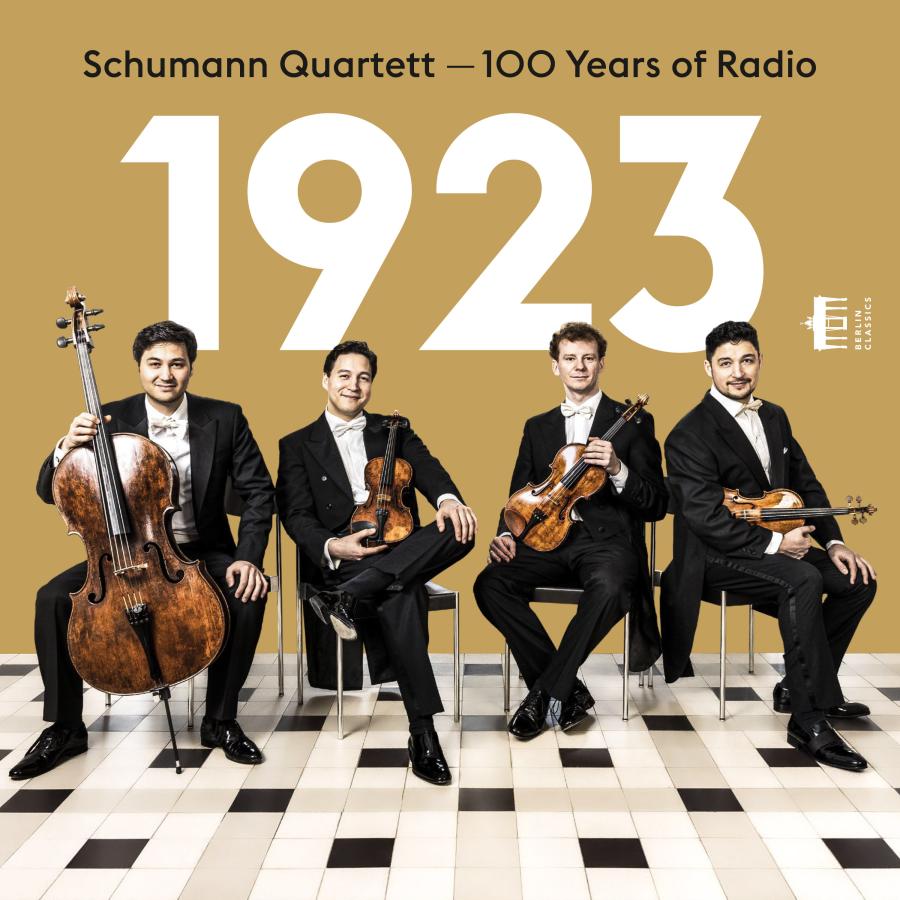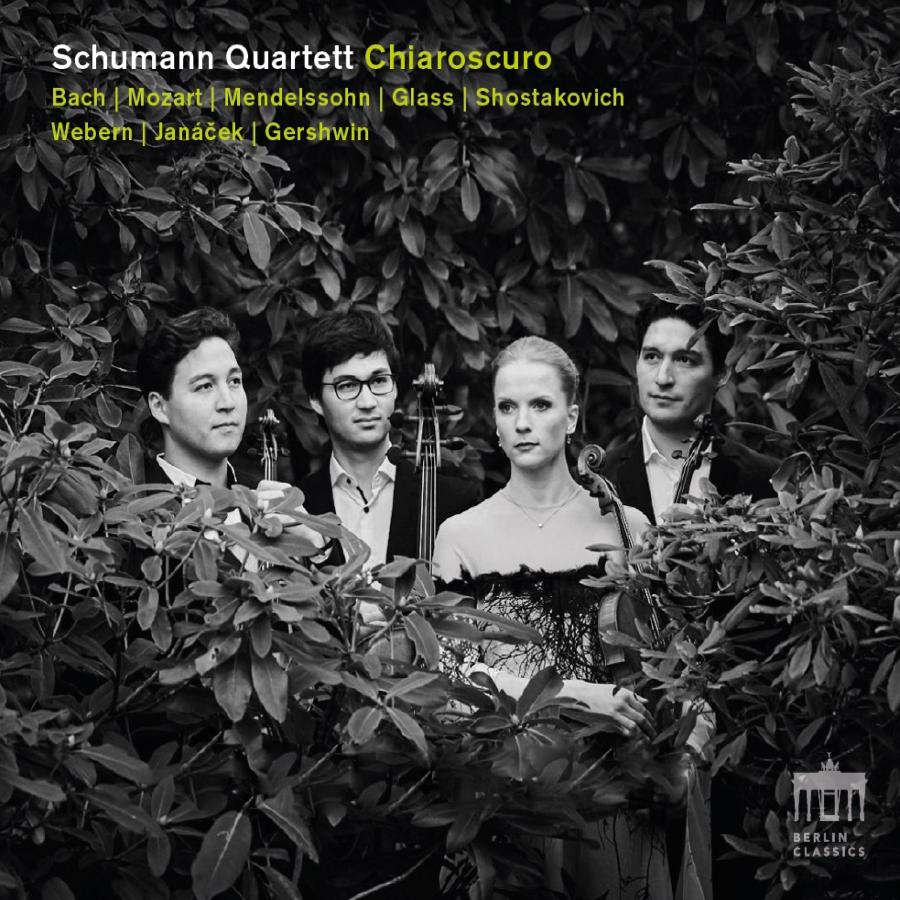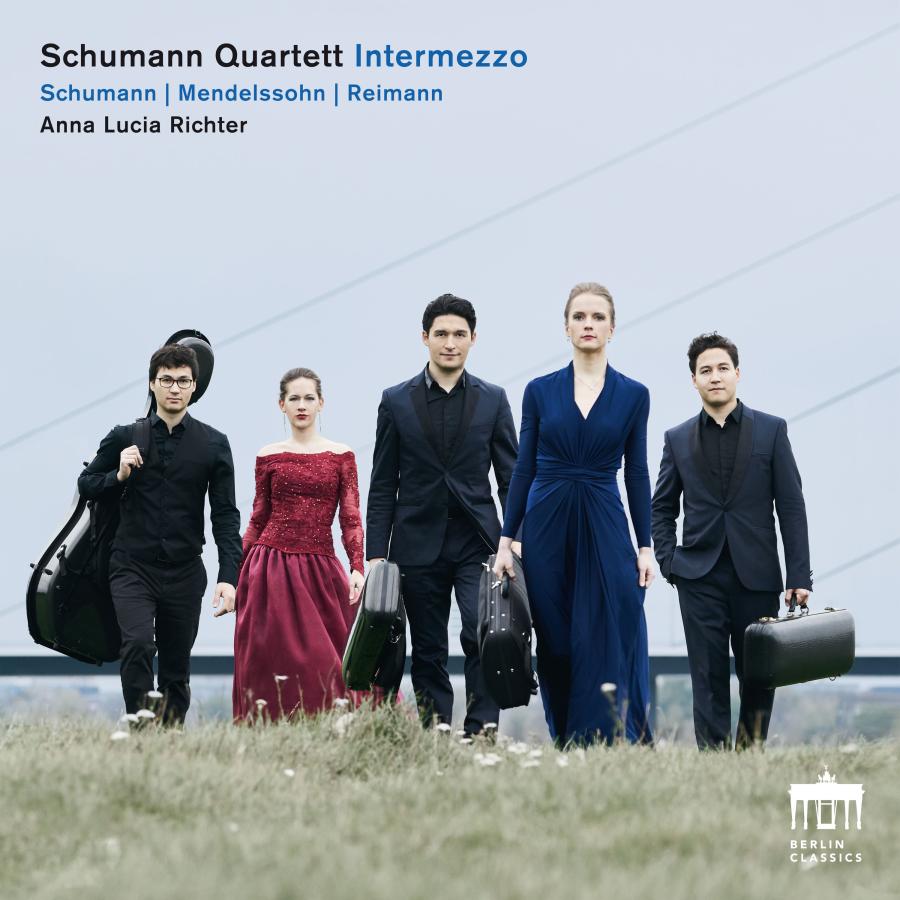After the three concept albums Landscapes, Intermezzo & Chiaroscuro, which among other prices were awarded with a German Record Critics’ Prize and an Opus Klassik, the world-famous Schumann Quartet dedicates itself to Franz Schubert – and 2 ½ of his string quartets.
The chronology of the album begins with Franz Schubert’s String Quartet in D major (No. 6, D. 74), which, as an early string quartet, stands for Schubert’s entry into this genre. He was now 16 years old, and his teachers included Antonio Salieri, whose name appears on the title-page. With Haydn, Mozart and Beethoven as his role models, Schubert was already looking for his own way forward, cautiously engaging in experiments in form and setting himself small composition assignments. It is no coincidence that he did this in the string quartet genre – which had become an indispensable feature of middle-class music-making.
It is followed – quasi as a work of the middle years – by the quartet movement in C minor. The Quartettsatz D. 703, usually played on its own, is followed by a second-movement Andante, a placid narrative. After forty bars, unfortunately, the music dries up, leaving the listener stranded. What are we to make of that? Why did Schubert stop work on a quartet that he had begun in 1820? We don’t know; obviously something else came up. Not for nothing are these years of Schubert’s life, plagued as they are by blind alleys and new directions, regularly described in the literature as his “crisis years”.
This is a slight challenge to the listener. Who would sit down to watch a film, knowing that it ends in the middle? And when Goethe described the string quartet as a “conversation between four intelligent people”, did he imagine the foursome suddenly struck dumb? What about the hidden narrative, with all its cross-references and contrasts, that will otherwise be found in such a work as this? However you play it, this Schubert string quartet remains unsatisfactory for the listener. Experiencing a work is something special – we must reconcile ourselves with the aesthetics of the unfinished. That too has its charm. The question is, how would the movement go on – a question to which we must think up the answer. Why not take a quiet moment and simply ponder it?
Apart from the Quartettsatz and its truncated second movement, Schubert wrote no more string quartets till 1824. One of the works: The String Quartet in A minor, D. 804 “Rosamunde”. The press hailed the “Rosamunde” as his “first-born” despite the 11 or 12 quartets that had preceded it; it remained the only one of Schubert’s fifteen quartets to be performed in the composer’s lifetime.
The three brothers Mark, Erik and Ken Schumann have been playing together since their earliest childhood. In 2012, they were joined by violist Liisa Randalu, who was born in the Estonian capital, Tallinn, and grew up in Karlsruhe, Germany. Those who experience the quartet in performance often remark on the strong connection between its members. The four musicians enjoy the way they communicate without words: how a single look suffices to convey how a particular member wants to play a particular passage. Although the individual personalities clearly manifest themselves, a common space arises in every musical work in a process of spiritual metamorphosis. The quartet’s openness and curiosity may be partly the result of the formative influence exerted on it by teachers such as Eberhard Feltz, the Alban Berg Quartet, or partners such as Menahem Pressler
Fragment Schumann Quartett
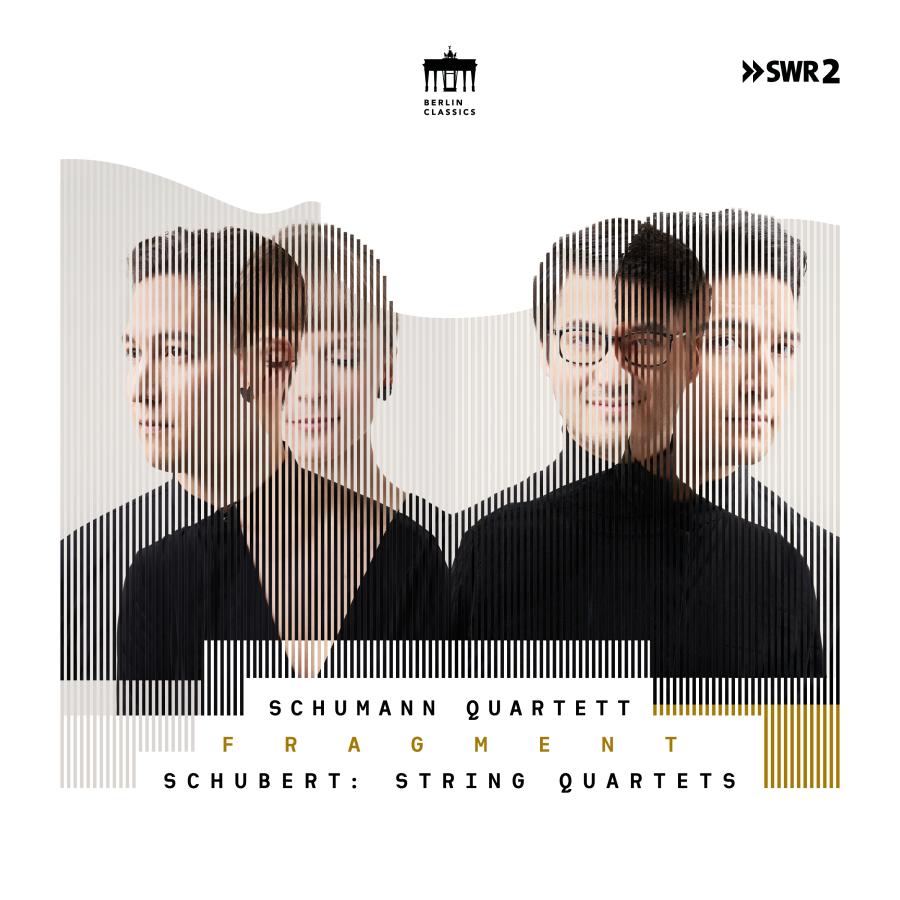
Artist
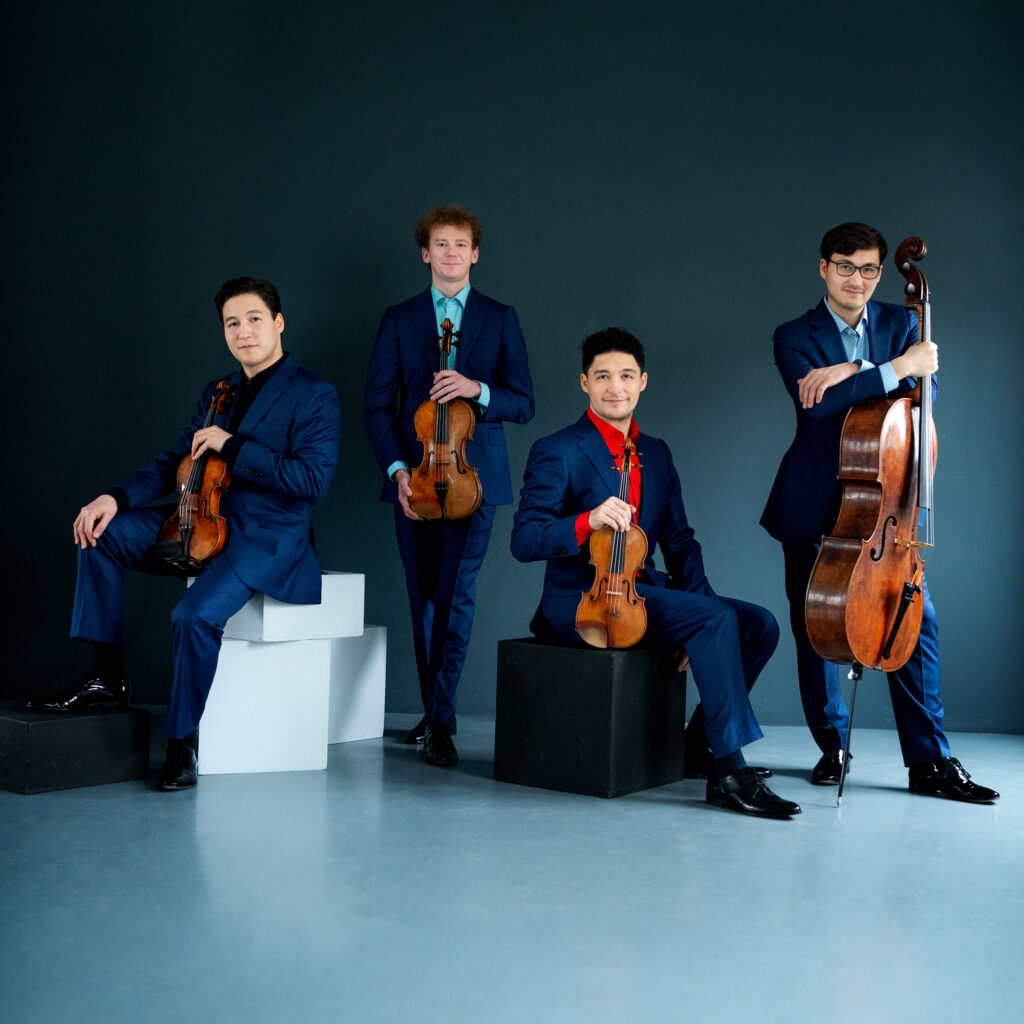
Composer

Further information
Genre
Musik für Kammerensemble
Publication date
14.08.2020
After the three concept albums Landscapes, Intermezzo & Chiaroscuro, which among other prices were awarded with a German Record Critics' Prize and an Opus Klassik, the world-famous Schumann Quartet dedicates itself to Franz Schubert - and 2 ½ of his string quartets.
The chronology of the album begins with Franz Schubert's String Quartet in D major (No. 6, D. 74), which, as an early string quartet, stands for Schubert's entry into this genre. He was now 16 years old, and his teachers included Antonio Salieri, whose name appears on the title-page. With Haydn, Mozart and Beethoven as his role models, Schubert was already looking for his own way forward, cautiously engaging in experiments in form and setting himself small composition assignments. It is no coincidence that he did this in the string quartet genre – which had become an indispensable feature of middle-class music-making.
It is followed - quasi as a work of the middle years - by the quartet movement in C minor. The Quartettsatz D. 703, usually played on its own, is followed by a second-movement Andante, a placid narrative. After forty bars, unfortunately, the music dries up, leaving the listener stranded. What are we to make of that? Why did Schubert stop work on a quartet that he had begun in 1820? We don’t know; obviously something else came up. Not for nothing are these years of Schubert’s life, plagued as they are by blind alleys and new directions, regularly described in the literature as his “crisis years”.
This is a slight challenge to the listener. Who would sit down to watch a film, knowing that it ends in the middle? And when Goethe described the string quartet as a “conversation between four intelligent people”, did he imagine the foursome suddenly struck dumb? What about the hidden narrative, with all its cross-references and contrasts, that will otherwise be found in such a work as this? However you play it, this Schubert string quartet remains unsatisfactory for the listener. Experiencing a work is something special – we must reconcile ourselves with the aesthetics of the unfinished. That too has its charm. The question is, how would the movement go on – a question to which we must think up the answer. Why not take a quiet moment and simply ponder it?
Apart from the Quartettsatz and its truncated second movement, Schubert wrote no more string quartets till 1824. One of the works: The String Quartet in A minor, D. 804 “Rosamunde”. The press hailed the “Rosamunde” as his “first-born” despite the 11 or 12 quartets that had preceded it; it remained the only one of Schubert’s fifteen quartets to be performed in the composer’s lifetime.
The three brothers Mark, Erik and Ken Schumann have been playing together since their earliest childhood. In 2012, they were joined by violist Liisa Randalu, who was born in the Estonian capital, Tallinn, and grew up in Karlsruhe, Germany. Those who experience the quartet in performance often remark on the strong connection between its members. The four musicians enjoy the way they communicate without words: how a single look suffices to convey how a particular member wants to play a particular passage. Although the individual personalities clearly manifest themselves, a common space arises in every musical work in a process of spiritual metamorphosis. The quartet's openness and curiosity may be partly the result of the formative influence exerted on it by teachers such as Eberhard Feltz, the Alban Berg Quartet, or partners such as Menahem Pressler
Tracklist - These are the tracks you will hear on the album
Fragment
Schumann Quartett
1
I. Allegro ma non troppo
2
II. Andante
3
III. Menuetto. Allegretto
4
IV. Allegro
5
I. Allegro assai
6
II. Andante (Fragment)
7
I. Allegro ma non troppo
8
II. Andante
9
III. Menuetto - Allegretto - Trio
10
IV. Allegro moderato


















